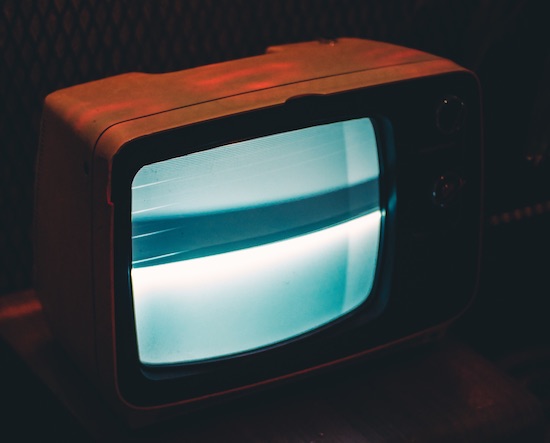I have always nurtured an admiration for the compulsive. All that spasms on its own accord in one’s body is holy to me. This devotion certainly stems from a contingency in my biography – a minor detail in the grand scheme of my character which touched me, irreparably, with its jittery motion.
Since I can remember, I was gifted with the need to move my arms every time something attacks or delights my nervous system. If a thought or an emotion proves itself to be a little too much to bear, something calls – from above or below, it is hard to tell – my upper appendages and forces them to flap around, crashing on my body. My arms cease to be me, and they are moved by a will which compels from afar.
Nowadays, I have learned (reluctantly) to control this imperative, relegating it to the basement of my life as a somewhat private fact. But the source of this motion was – and still is – hotly debated in my family; torn, as always, between Catholic fervour and the imprecise geometries of psychology and psychiatry. My compulsion is, for my devoted parents and me, a figure contested by the Devil, the angelic spheres and the possibility of a slight form of autism. Whoever or whatever sets my limbs in motion notwithstanding, my main takeaway from this unflattering possession has always been that – as secular as my belief systems might be – I was still a vessel for something other than me, the host for a logic which will never be my own.
I’m writing these considerations on a minor inconvenience in my biography as a man forced to confess, once again compelled by an outer power. This time, the influence binding my fingers is much clearer. Reading Claire Cronin’s Blue Lights on the Screen made me, with grace and tenacity, spiral in on myself and the fate, even in the most minute sense of the word, which was cast upon me. I had to confront my wounds incessantly and traverse them against my better judgement.
Cronin’s book, reduced to its bare bones, is a great ghost story, haunted by three main phantoms: horror, faith, and depression. These creatures roam through the pages, amongst a painful, yet clear prose and a carnival of distorted IMDB horror synopses, which punctuate and pierce the book. The Things’ presence is scattered in a work that growls and hums impatiently about the weird nexus of being a horror fan, navigating through depressive states and cherishing and battling devotional sentiments – or, putting it differently, being a human being stalked by its own shadows. It is a book about Claire Cronin being haunted by her very nature.
The main medium which summons these creatures upon the author and the reader is the blue light of the screen which christens the book, the mirror-hall of monitors (laptops, phones, TVs, or even simple photos, with their suffocated but just as preternatural brightness) which accompany us throughout our day-to-day life. These function, in Cronin’s vision, as a portal to a place beyond – as “an archive of tears” beyond the world of the conscious and the living. The glowing light of a horror movie or a YouTube video become, in Cronin’s hands, an inhuman analyst dragging out our innermost drives, needs, tics, and fears – be it my spasms or your phobias. Through a continuous and almost obsessive analysis of the mediation of the screens which adorn our existence, Cronin invents a new kind of spiritism aimed at talking to one’s inner contradictions and unpredictable chasms through our TV set.
Scrying these black mirrors, the pale, haunting figures are bound, by Cronin The Summoner, to share with the reader the whole extent of the spooky action at a distance that they exercised on the author’s life – a life which, by the last page, appears like a palpable film noir, exploded and garbled at the edges. After all, as Cronin herself notes, “a person’s life exceeds the neat arrangement of a detective story”.
The end result is a compelling and lyrical case study of the author’s auto-exorcism, but its purpose is not to serve as a cautionary tale. And, as most exorcism in horror movies often do, it surely does not end well. Cronin’s literary cleansing, in fact, fades with an eerie description of an equally eerie green. It ends, anti-climactically, with a sense of unspeakability in the face of existence. As if, after all the exploration Cronin has done with us, she could only stutter at the world. The book is confessional and hopelessly open-ended, giving its audience no rest or quietude. The traumas and the desperate devotional vows that permeated Cronin’s poetics are not tamed; they linger endlessly, pointing towards an unfinished and introverted cosmic horror which diagrams the logic of being possessed by something remote, yet intimate, and acting accordingly.
Nonetheless, every apparition, every stutter and every loose thread are a trapdoor and the most interesting side of Cronin’s work is certainly not the plot, the climactic release or the narrative arch of this tour de force of “critical theory as demonic possession” (as Eugene Thacker described it). The little, unwanted present this book delivers to its attentive reader is precisely this feverish stuttering, this ability of looking at oneself and the world as if they were horrid mazes. Its purpose is not to enrich the reader, but to make her fall silent and to stumble onto herself, in horror and awe – just like I did onto my own bodily falterings and syncopations. Claire Cronin’s work is a blood-shot eyed tour-guide to losing one’s ability to speak and think; to being bewildered by the strangeness of the dead and the living. It is the incarnate example of how you can commune with ghosts and enjoy the wonders of mystical aphasia through your screen.
Blue Light of the Screen: On Horror, Ghosts, and God by Claire Cronin is published by Repeater Books


